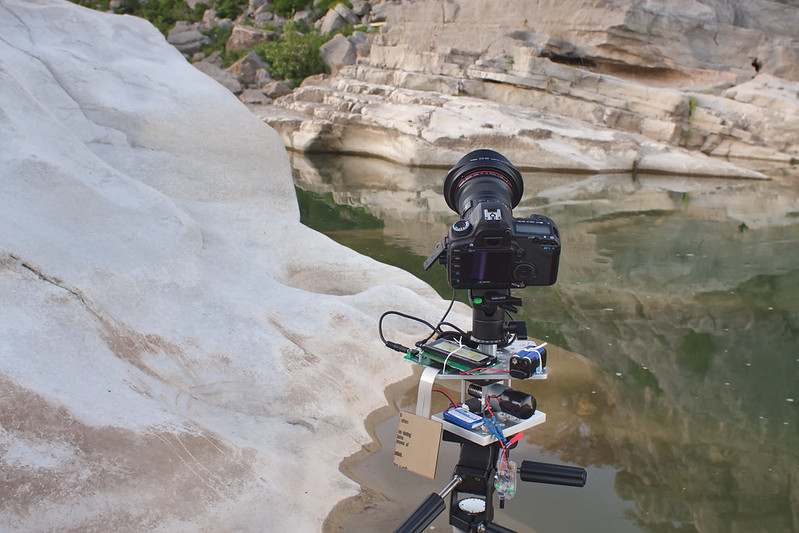motleypixel
Newbie level 5

- Joined
- Apr 26, 2012
- Messages
- 9
- Helped
- 0
- Reputation
- 0
- Reaction score
- 0
- Trophy points
- 1,281
- Location
- Austin, TX
- Activity points
- 1,397



That sounds like the sort of thing that could be done with a couple of (dirt cheap) 555 chips and a MOSFET to switch the motor power.I figure about a 4ms response time for the ckt to cut power. I would like to speed this up if possible and I would like to consider adding other logic to the ckt later in the future such as only enabling the ckt for green LED signals > 1 second, i.e. only enable the c/o ckt when shutter speeds are 1 second or slower.
That sounds like the sort of thing that could be done with a couple of (dirt cheap) 555 chips and a MOSFET to switch the motor power.
A couple of questions:
You mentioned that the turntable rotates one revolution per hour and the camera takes a photograph once every 3 seconds. So you're taking 1200 photos per revolution?! What is the purpose, if you don't mind me asking?
I presume the short exposure times are during the day and the long exposures are at night? One concern is that if you stop the motor for 1 or 2 seconds once every 3 seconds, the turntable will slow down to 1 revolution every 1.5 to 3 hours. Will that not be a problem?
The idea of stopping the motor only for LED signals > 1 second may have an wanted side-effect. For a 2 second exposure, the motor will stop half way through the exposure, resulting in a half-fuzzy image.
Perhaps it would be better to use a slightly more complex circuit that uses the length of one exposure to decide whether to stop the motor for the next exposure. That way the motor will either be stopped for the entire exposure, or not at all.
This is the sort of circuit I'm thinking of now (having given up on the 555 idea).Would like to see a working schematic
Oops. I thought you were bulb-ramping with a fixed interval, but you're obviously interval ramping as well. btw, I've belatedly looked at your website and followed the links so I now have a bit better understanding of the terminology and what you're doing.The system starts usually at 40ms shutter open and generally ends up at shutter open for about 20 seconds.
That would make it much easier. There's another benefit too: When the video is replayed, the rotational speed will reduce smoothly and continuously.the more I think about it I think just enabling the the c/o ckt all the time will be fine.
Even better!Now I can compensate for this a bit if I gradually speed up the motor using the pwd speed controller.
No problem. An opto-isolator can be used, with it's internal LED connected to the Little Bramper instead of it's green LED. I think that's what you showed in one of your earlier pictures.Last, I have to be up-front, I don't like the photo-cell design because it's too hard to isolate the light from the LED.
We use cookies and similar technologies for the following purposes:
Do you accept cookies and these technologies?
We use cookies and similar technologies for the following purposes:
Do you accept cookies and these technologies?
